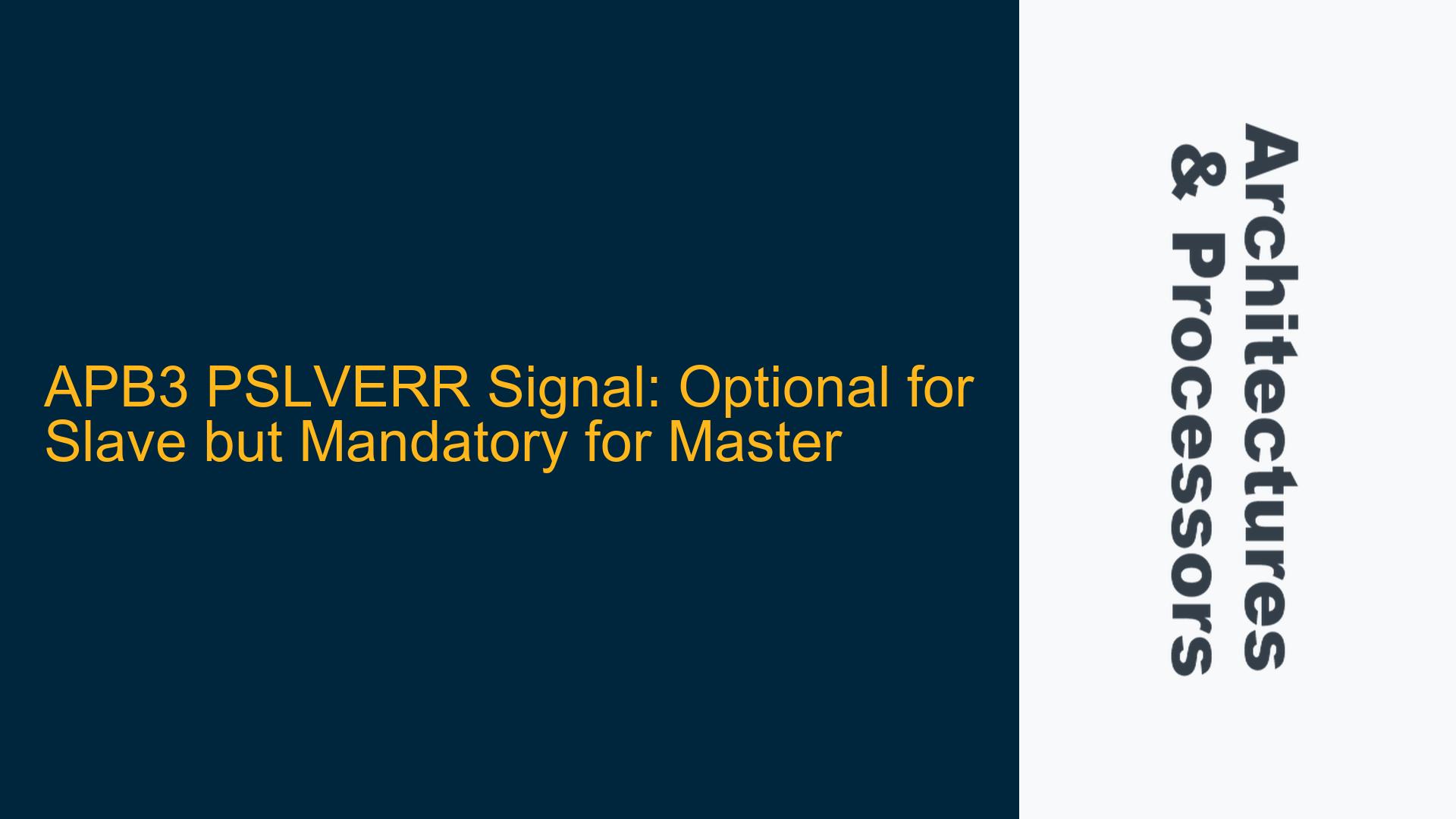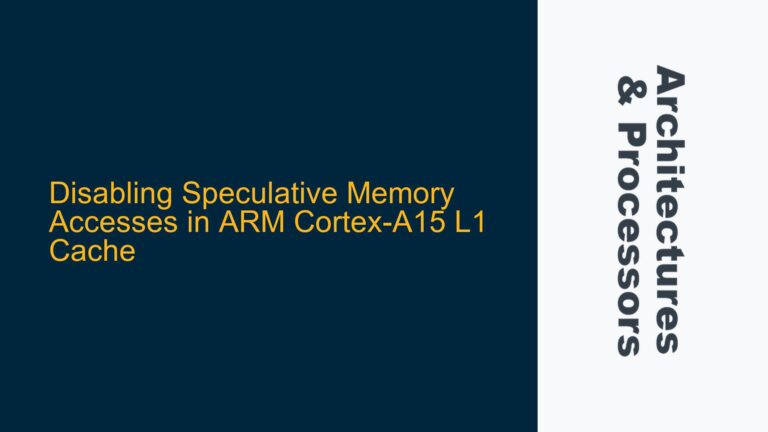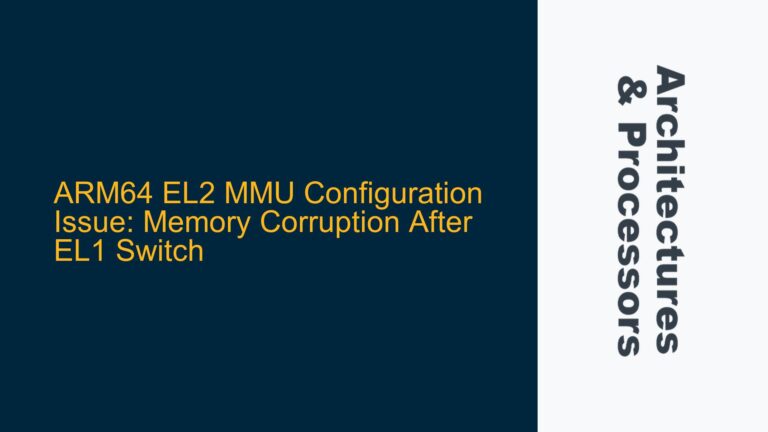APB3 Slave PSLVERR Signal Optionality and Master Requirements
The APB3 protocol, as defined in the ARM AMBA specification, is designed for low-power, low-complexity peripherals. One of the key features of APB3 is the introduction of the PSLVERR signal, which allows slaves to indicate error conditions during a transaction. However, the specification explicitly states that APB peripherals are not required to support the PSLVERR pin. This raises questions about the optionality of the PSLVERR signal for both masters and slaves, and the implications of mismatched support between them.
The PSLVERR signal is an output from the slave and an input to the master. When a slave asserts PSLVERR, it indicates that an error has occurred during the transaction. This could be due to various reasons such as an invalid address, a write to a read-only register, or a read from a write-only register. The master, upon receiving this signal, can take appropriate action, such as retrying the transaction or logging the error for further analysis.
However, not all slaves need to support error signaling. Simple peripherals that do not have complex error conditions may choose to omit the PSLVERR signal. In such cases, the master must be able to handle transactions without expecting an error response. This is where the optionality of the PSLVERR signal for slaves comes into play.
On the other hand, the master must always be capable of receiving the PSLVERR signal if any of the slaves on the bus support it. This is because the master needs to be aware of any error conditions that may arise during transactions. If the master does not support the PSLVERR signal, it would be unable to detect errors signaled by the slaves, potentially leading to system failures or undefined behavior.
Implications of Mismatched PSLVERR Support Between APB3 Master and Slave
When designing an APB3-based system, it is crucial to ensure that the master and slave components are compatible in terms of PSLVERR support. If a slave supports PSLVERR but the master does not, the system may fail to handle error conditions correctly. Conversely, if the master supports PSLVERR but the slave does not, the master may incorrectly interpret the absence of an error signal as a successful transaction, even if an error has occurred.
Consider a scenario where an APB3 master is connected to multiple slaves, some of which support PSLVERR and others do not. If the master does not support PSLVERR, it would be unable to detect errors from the slaves that do support it. This could lead to silent failures, where errors go unnoticed and the system continues to operate in an incorrect state. In such cases, the master must be designed to handle the absence of the PSLVERR signal gracefully, either by assuming that no errors will occur or by implementing alternative error detection mechanisms.
Another scenario to consider is when an APB3 master is connected to an APB2 slave. APB2 does not support the PSLVERR signal, so the master must be designed to handle transactions without expecting an error response. However, if the master is designed to expect PSLVERR from all slaves, it may misinterpret the absence of the signal as an error, leading to incorrect behavior. This highlights the importance of ensuring that the master and slave components are compatible in terms of protocol version and feature support.
Ensuring Compatibility and Correct Handling of PSLVERR in APB3 Systems
To ensure compatibility and correct handling of the PSLVERR signal in APB3 systems, several steps should be taken during the design and verification phases. First, the system architect must clearly define the requirements for PSLVERR support in both the master and slave components. This includes determining which slaves will support PSLVERR and ensuring that the master is capable of handling the signal if any slaves do.
During the design phase, the master should be implemented to support the PSLVERR signal, even if not all slaves will use it. This ensures that the master is future-proof and can handle any slaves that may be added to the system later. The master should also be designed to handle the absence of the PSLVERR signal gracefully, either by assuming that no errors will occur or by implementing alternative error detection mechanisms.
For slaves that do not support PSLVERR, the design should ensure that they do not assert the signal under any circumstances. This can be achieved by tying the PSLVERR output to a constant value (e.g., 1’b0) or by omitting the signal entirely from the design. However, if the slave is designed to support PSLVERR, it must be implemented correctly to ensure that errors are signaled only when appropriate.
During the verification phase, the system should be thoroughly tested to ensure that the PSLVERR signal is handled correctly in all scenarios. This includes testing with slaves that support PSLVERR and those that do not, as well as testing with different combinations of master and slave configurations. The verification environment should include test cases that cover all possible error conditions, including invalid addresses, write to read-only registers, and read from write-only registers.
In addition to functional verification, the system should also be tested for performance and timing. This includes ensuring that the PSLVERR signal is asserted and de-asserted at the correct times, and that the master responds to the signal within the required timing constraints. Timing violations can lead to incorrect behavior, so it is important to verify that the system meets all timing requirements.
Finally, the system should be tested for robustness and error recovery. This includes testing how the system handles unexpected error conditions, such as a slave asserting PSLVERR when it is not expected to, or a master failing to respond to PSLVERR correctly. The system should be designed to recover gracefully from such errors, either by retrying the transaction or by logging the error for further analysis.
In conclusion, the PSLVERR signal in APB3 systems is optional for slaves but mandatory for masters. Ensuring compatibility and correct handling of this signal is crucial for the reliable operation of the system. By following the steps outlined above, designers and verification engineers can ensure that their APB3-based systems are robust, reliable, and capable of handling error conditions correctly.






